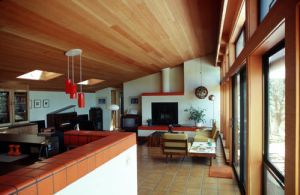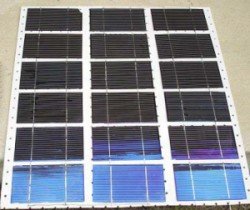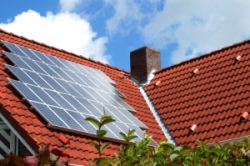Passive Solar Energy - Naturally Heat, Cool, & Light Your Home
Using passive solar energy is one of the best ways to take advantage of renewable energy.
The future of solar energy includes passive solar. Passive solar power can be used to heat, cool, and light your home. It uses your home's features to reduce or eliminate mechanical heating and cooling and artificial lighting. As a result, your energy costs are reduced and your home is naturally comfortable.
The main difference between active and passive solar energy is that with passive solar you don't use mechanical systems.
The collection, storage, and distribution of the solar energy is all natural! In order to do this successfully, you will need to put some thought into the design elements of your passive solar house.
Passive Solar Design
 A Passive Solar House
A Passive Solar HouseCourtesy DOE/NREL, Credit Pamm McFadden
There are several basic design principles that you can use to take advantage of passive solar energy. How they are applied will depend on the specific climate and location you live in.
- Orientation: Depending on your climate, your house will need to be positioned to take advantage of the sun's rays for heating or to minimize their impact for cooling as well as to take advantage of prevailing winds.
- Shading: Shading is important for controlling the temperature and the natural lighting of the home. Shade can be provided by the structural elements of the home as well as by the landscape.
- Insulation: Your home's insulation is critical for maintaining a warm home in the winter and a cool home in the summer.
- Thermal Mass: Thermal mass allows your home to store the heat generated during the day so that it can slowly be released after the sun sets.
- Windows: Properly designed windows will ensure your home is comfortable year-round. When properly designed, your home will be cool in the summer, warm in the winter, and you will have plenty of daylighting.
- Ventilation: Designing your home to take advantage of natural ventilation can keep it cool during the summer.
Passive Solar Applications
The three applications of passive solar energy are...
Passive Solar Heating
Passive solar heating is a type of solar space heating.
Passive solar heating can be accomplished by...
- Orienting your home so that the majority of it's windows face south
- Sizing your windows for optimal heat gain and making sure you have the right type of windows
- Utilizing thermal mass to absorb the solar energy entering the windows for release during the night
- Insulating your home to minimize heat loss
Passive Cooling
Passive cooling is a type of solar cooling.
The main idea behind passive cooling is to minimize the impact the summer sun has on your home. This can be accomplished by...
- Orienting your home and landscape so it can take advantage of cooling breezes
- Designing your home to minimize barriers to air paths through the home to allow for natural ventilation
- Using the right size and type of windows in order to minimize the heat gain in the summer and that enable ventilation by opening
- Using both structural features and landscaping to create shading
- Insulating your home to maintain a comfortable temperature
Daylighting
Daylighting is a type of solar energy lighting.
Daylighting is simply the use of natural light to illuminate your home. Good daylighting brings a pleasing quality to the rooms in your home while reducing your home's electricity costs.
Successful daylighting is accomplished by...
- Positioning and sizing your windows to allow for sufficient natural light to enter your home while accounting for heat gain, heat loss, glare, and the available sunlight throughout the day
- Using exterior shading to diffuse the sunlight
Passive Solar Energy - Nature's Way
Creating a passive solar house will not only save you money, but will also provide you with a naturally comfortable home that is pleasing to live in.
Home > Types of Solar Energy > Passive Solar Energy



